We received an alarming email from a reader very recently and decided we must address it before some of the other questions that have accumulated (even though we will get to all them). The reader claimed to have screw worms – that is, she is infected with screw worms (sometimes spelled as one word, “screwworms”) – and she is obviously quite concerned about this. She is wondering what she should do, and the answer we give to someone with a screw worm infection is the same answer we give to anyone with a medical condition: seek medical care. Worms are our forte, so we certainly know a bit about screw worms, but anything we say should not in any way be construed as medical advice. That said, we can supply a little information about screw worms and the problems they cause, and it may be of assistance to our reader with the (potential) screw worm infection (but, again, it should absolutely not replace medical care).
The word “potential,” included parenthetically above, is key, as we are of course unsure if our reader does in fact have a screw worm infection. There are two types of screw worms, which are actually larval forms of a fly. The first is Cochliomyia hominivorax, also called New World screw worm fly, and the other is Chrysomya bezziana, or Old World screw worm fly. (As you might be able to tell by their scientific names, these flies are not only distinct species, but also belong to different genera. It is the larvae of both types of flies that are commonly called “screw worms.”) This is relevant to the reader’s potential infection because the first type of screw worm, Cochliomyia hominivorax, has been eradicated from several countries, including the United States. Currently, they are found in the New World (Western Hemisphere) tropics (i.e., in countries like Nicaragua, Costa Rica, and Panama, although they are also found in Mexico.) Eradication efforts aided by the United States Department of Agriculture are ongoing. The Old World variety is prevalent in Africa, India, and Asia, or more precisely in the tropical regions of these areas. (They can’t survive over about 8,200 feet, or 2,500 meters.) The countries in which the fly is not present are of course concerned about it spreading there.
So, depending on where our reader lives, it may be very unlikely that she has a screw worm infection, like if she lives in a country in which it has been eradicated – if she does in fact have it in a country in which it has been eradicated, it means, catastrophically, that it has been reintroduced. Or, it may not even be possible for her to have a screw worm infection if, for example, she lives at a high elevation. Of course, even if our reader does live in a place in which they are present, this in no way ensures that she actually has a screw worm infection. Mammals, the target of screw worms, must have an open wound in which screw worm flies can lay their eggs to get infected, and since humans generally dress their wounds, screw worm infections are a lot more common among other types of animals, such as livestock.
If our reader does have a screw worm infection, though, she certainly knows it’s a nasty affair (which is, once more, why she should definitely seek medical care). Once infected, screw worms literally consume their host, eating flesh as they burrow (or “screw”) themselves into tissue. This process can of course make the wound worse, which can lead to additional infection.
For this reason, although screw worm infection can be treated, we very much hope our reader doesn’t have this ailment, and if she does, she should definitely get it addressed as soon as possible. We wish her the best of luck.
All About Worms is always free, always reader-supported. Your tips via CashApp, Venmo, or Paypal are appreciated! Receipts will come from ISIPP Publishing.



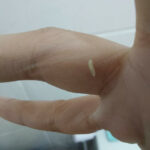
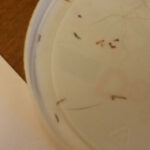
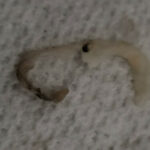



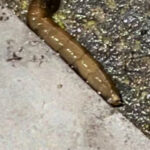
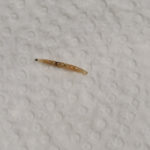




I think the reader is referring to her/his pet dog’s screwworm test, as being required to enter US. I’m having the same problem, i need to have a screwworm clearance from the vet for my dogs but the problem is the vets doesn’t even know about screwworms.